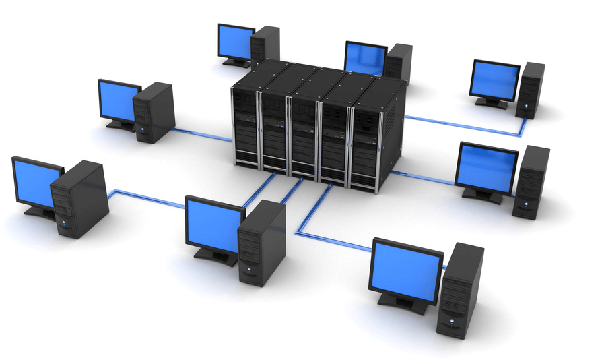Managing computer networks for maximum efficiency involves several different elements. It includes configuration management, fault management, performance management, regulatory requirements, and more.
Fault Management
Fault management is a critical part of maintaining your network infrastructure. It helps ensure that your systems are stable, efficient, and available. A good fault management system will monitor and identify faults in your network. What is network management software role then? This will help prevent them from causing issues in the future.
The first step to ensuring your communication system is in tip-top shape is to detect any problems as soon as they occur. This is usually done through error detection, which alerts the administrator when a device is not operating as expected.
The next step is to isolate the fault. This allows you to guarantee that your service will continue even if there is a problem with your infrastructure. However, not all faults can be easily isolated. Some are complex and will require a skilled technician to repair them.
Identifying the problem is a big deal. The management platform should be able to send an alert to the network administrator through email or SMS.
The fault management system should be able to correctly identify the source of the problem, as well as the location of the problem. This will allow the system to correct the fault.
The system should also be able to execute a restoration program to fix the fault automatically. This may include rerouting traffic, signaling, and error recovery.
Fault management is a must in large, complex communication networks. While not every problem requires attention, many require a quick and easy solution.
Configuration Management
Configuration management for computer networks enables organizations to maintain a stable, secure, and reliable operational environment. It helps prevent unexpected breakage and allows users to roll back changes quickly. By creating a transparent, standardized database of the system, configuration management allows IT staff to identify problems more quickly.
Configuration Management originated in the US Department of Defense in the 1950s. The process was originally a technical management discipline for hardware. But gradually, it was adopted by the software development industry. Today, it is considered the standard practice in virtually every industry.
Configuration management enables IT teams to increase efficiency and improve the quality of their work. It also reduces the overall cost of support. As a result, it is becoming more critical than ever.
When using configuration management, it is important to ensure that the system is updated frequently. Maintaining an up-to-date inventory of your assets and preventing duplications and errors can help you minimize future costs.
During the planning stages of your project, it is essential to assess the scope of your requirements and the time frame for implementation. Consider your budget constraints.
A configuration management tool will allow you to automate your processes, increasing speed, precision, and efficiency. Additionally, it will eliminate manual efforts, allowing you to focus on more complex tasks.
With version control, your team can quickly review and audit modifications to a configuration item. This can include changes to applications, operating systems, or even software modules.

Performance Management
Network performance management is a key tool to help your business improve efficiency. It offers a comprehensive view of your network to identify problems and plan for growth.
Many tools on the market can measure network performance. The best solution is one that is tailored to your organization. Performance management solutions provide a range of metrics, including packet loss and delay variation. They also offer real-time visibility and analytics.
These tools are designed to collect and analyze statistical data about traffic flows and managed objects. This information helps you make smarter, faster decisions.
For example, packet loss is a metric that indicates a high amount of data that has been lost on your network. Packet loss is measured in terms of packets per second. A high packet loss rate can indicate inefficiencies that may be caused by congestion or errors.
Network performance monitoring is a useful tool that can be used to monitor router and port performance. However, this is only part of the puzzle. Using a full-circle view can be helpful.
The ability to analyze and visualize network and application performance simultaneously provides a holistic picture. Intelligent visualization allows you to quickly find, diagnose and resolve network issues.
Network management also includes automated data collection to help you spot patterns and trends in your network. By using the proper data, you can create more precise network management rules.
Regulatory Requirements
If your business wants to operate in a manner that ensures maximum efficiency, you need to adhere to regulatory requirements. These are a set of rules and regulations aimed at protecting your business and its stakeholders. By following them, your company will be able to safeguard its processes and its data from hackers.
The first step to complying with regulations is to understand them. Every organization has to follow the rules and regulations of its industry. For example, malevolent actors in finance tend to target businesses dealing with sensitive information.
The second step is to create an appropriate strategy for remotely accessing the network. You will need a document that lists the processes you need to employ to ensure that you manage the network in the best possible way. In addition, you must create a protocol to monitor the network’s performance.
Lastly, you must be aware of the penalties that can be imposed if you are not compliant. For example, in some instances, you may be liable for personal liability and lose a large amount of money. This can make it difficult for your organization to raise funds. It can also lead to business embargoes.
Regulations and compliance have become essential in various industries, from health care to finance. However, knowing how to implement them effectively can be challenging. Fortunately, some tools and resources can help you stay on top of the issue.








Travel Insurance Is A Must-Have For Everybody Who Travels.
Weather Situations When H11/H8/H9 LED Headlight Bulbs Be Used
How To Live The Happy Live As A Wheelchair User
Why Prefer Eat Verification Website?
The Best strategies to Start Winning in the Online Sports